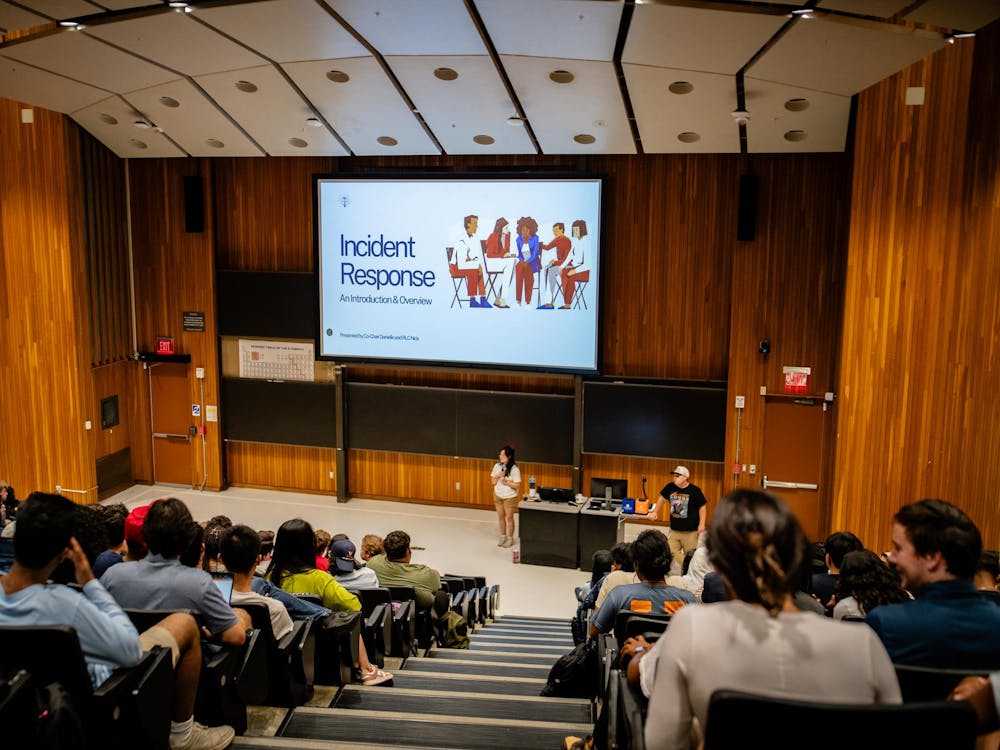FOR THOSE of us who have the privilege of driving up and down Route 29 between Charlottesville and Washington every time we wish to go home, the sight is very familiar: a police cruiser with blue flashing lights located right behind a car with a "U.Va." bumper sticker and an angry student inside. Sometimes it seems like the entirety of Madison and Greene counties are funded by pulling over U.Va. students on the way to and from school.
Deflation of speed limits is a rampant problem in our state and our country. Ostensibly, speed limits exist to protect us. Theoretically, these limits exist to prevent the populace from severely injuring themselves and others with their automobiles. However, as cars become faster and safer, it only becomes more apparent that these arbitrarily low speed limits ignore the actual safe speed of traffic to pad the pockets of various governments and insurance companies.
As any civil engineer will explain to you, speed limits for the most part used to be determined by something called the "85th percentile rule" -- the speed limit should be set at the speed that 85 percent of the traffic will not exceed. All too often we see this completely ignored. In the mid-1970s, in the midst of a serious oil crisis, the federal government limited the speed on all highways in the country to 55 mph, not to save lives, but to save gas. It was not until 1995 that federal restrictions on speed limits were lifted and states again had the option of setting realistic speed limits.
States have long trumpeted the claim of safety when setting speed limits; however, low speed limits do not save livesbecause they are simply ineffective. Numerous studies have shown that changing the speed limit has very little affect on the actual average speed of traffic. A report from 1996 commissioned by the U.S. Department of Transportation in the wake of the nationwide rise in speed limits states, "The average change in any of the percentile speeds at the experimental sites was less than 1.5 mph, regardless of whether the speed limit was raised or lowered." The study found that lowering the speed limit by as much as 20 mph or raising the speed limit by as much as 15 mph did not reasonably affect how people traveled. A lower speed limit simply serves to make criminals of more of the population.
So why are some so opposed to raising the speed limit? "Speed kills!" is a common mantra shouted by insurance company lobbyists and legislatures alike. A safety brochure from the Fairfax County Police department touts this very concept next to warning people not to drink and drive.
The fact of the matter is that many local governments view speeding tickets as a source of revenue. Speeding ticket revenue pays for more police cars and officers without placing a tax burden on the locals. Any change in speed limit which would threaten their ability to collect this tax for driving "unsafely" will be opposed with the greatest zeal.
Insurance companies also prefer low speed limits. The lower the speed limits, the more tickets that are issued. Insurance companies like tickets because they do not cost the company anything, but allow the company to charge its customers more. A speeding ticket stays on a driver's record for up to seven years, and insurance companies profit more for every minute of that.
Hand in hand with the notion of higher speed limits is the idea of licensing people to drive. Since it is clear that speed limits are completely ineffective as far as promoting safety, seeing as they are ignored for the most part, we must look to other options to promote driving safety. It is too easy to get a driver's license in this country. While the DMV cannot be expected to spend hours scrutinizing candidates, the bare standard that we currently hold applicants to must be raised. A firm grasp of the English language must be a prerequisite for holding a driver's license (so you can read street signs), and we must reign in both younger drivers and senior citizens by re-certifying drivers in such vulnerable age groups. Safety must be taught and enforced from the ground up.
This behavior by state and local governments is cause for great concern. A steady flow of traffic is in all of our best interests. Hopefully our lawmakers will realize that making criminals of us all does nothing to promote highway safety.
Daniel Bagley is a Cavalier Daily associate editor. He can be reached at dbagley@cavalierdaily.com.






